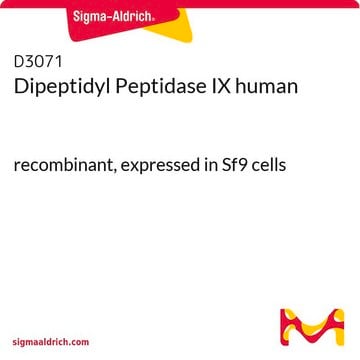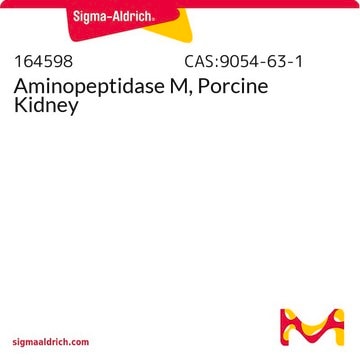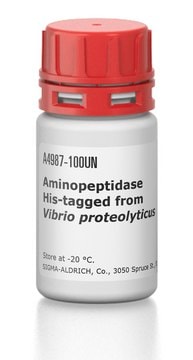D3321
Dipeptidyl Peptidase VII human
recombinant, expressed in Sf9 cells
Sinónimos:
DPP7, Quiescent cell proline dipeptidase
Seleccione un Tamaño
$692.00
Seleccione un Tamaño
About This Item
$692.00
Productos recomendados
recombinante
expressed in Sf9 cells
Nivel de calidad
Formulario
solution
actividad específica
≥1,500 units/μg protein
≥1500 units/μg protein
mol peso
89.1 kDa
enfermedades relevantes
diabetes; cardiovascular diseases
Condiciones de envío
dry ice
temp. de almacenamiento
−70°C
Categorías relacionadas
Aplicación
Acciones bioquímicas o fisiológicas
Propiedades físicas
Definición de unidad
Forma física
Palabra de señalización
Danger
Frases de peligro
Consejos de prudencia
Clasificaciones de peligro
Eye Dam. 1 - Repr. 1B - Skin Corr. 1C
Código de clase de almacenamiento
6.1C - Combustible acute toxic Cat.3 / toxic compounds or compounds which causing chronic effects
Clase de riesgo para el agua (WGK)
WGK 2
Elija entre una de las versiones más recientes:
Certificados de análisis (COA)
¿No ve la versión correcta?
Si necesita una versión concreta, puede buscar un certificado específico por el número de lote.
¿Ya tiene este producto?
Encuentre la documentación para los productos que ha comprado recientemente en la Biblioteca de documentos.
Active Filters
Nuestro equipo de científicos tiene experiencia en todas las áreas de investigación: Ciencias de la vida, Ciencia de los materiales, Síntesis química, Cromatografía, Analítica y muchas otras.
Póngase en contacto con el Servicio técnico










